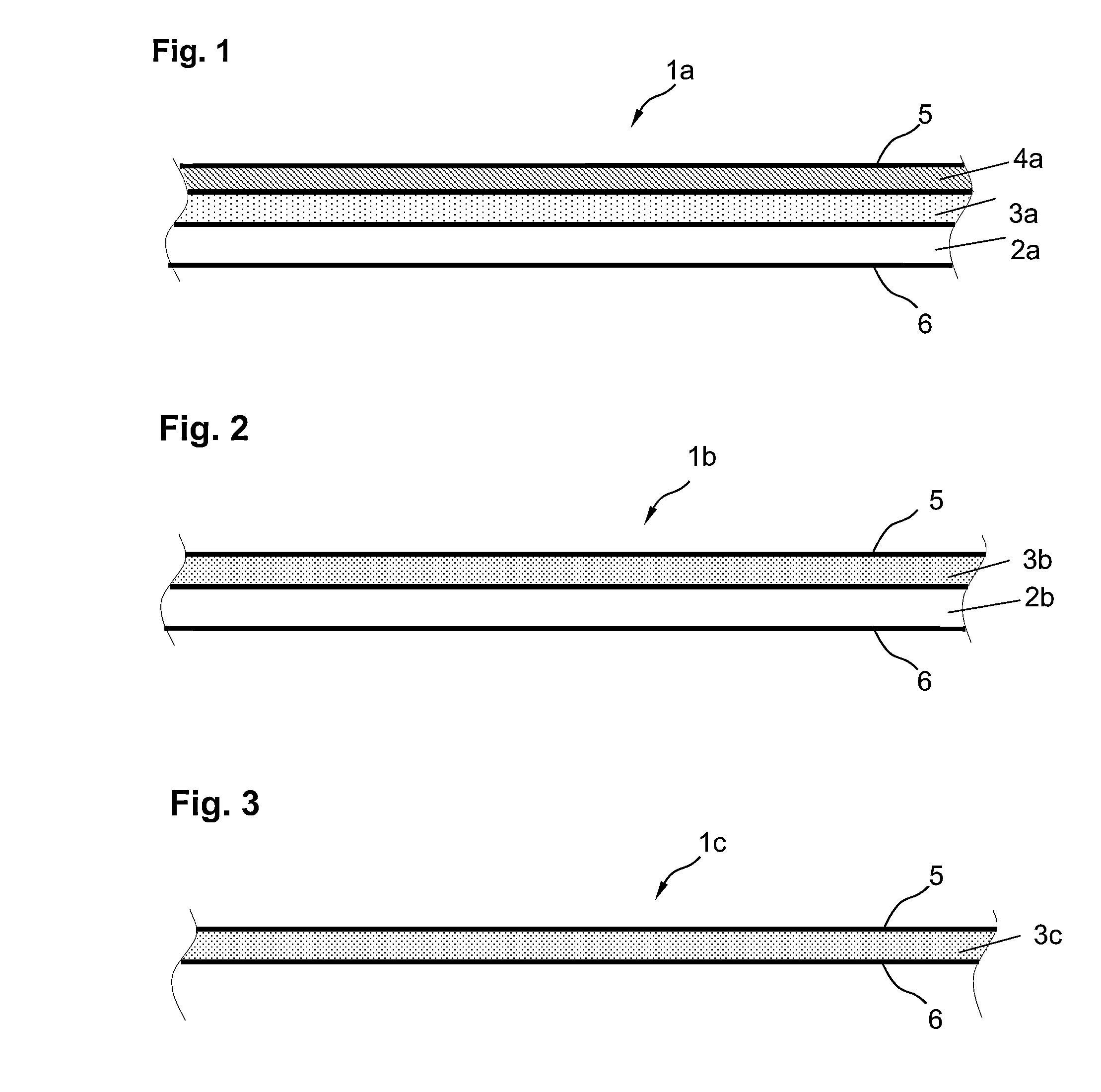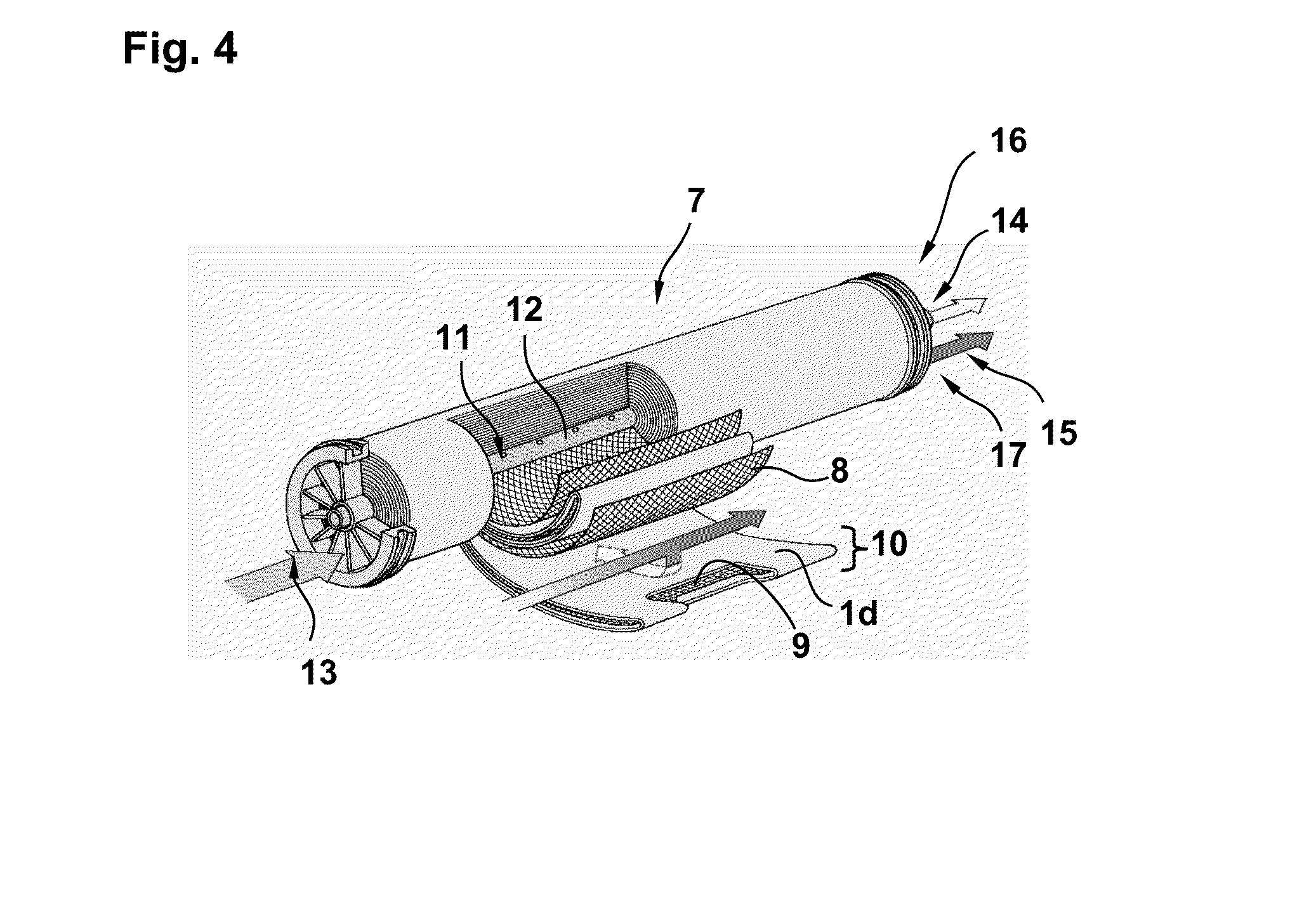Separation membrane for water treatment and production method for same
a technology of separation membrane and water treatment, applied in the direction of membranes, filtration separation, separation processes, etc., can solve the problems of increasing economic burden and wastewater burden, and achieve the effects of reducing chemical costs and wastewater treatment loads, high permeability, and high solute removal performan
- Summary
- Abstract
- Description
- Claims
- Application Information
AI Technical Summary
Benefits of technology
Problems solved by technology
Method used
Image
Examples
working examples
[0173]The present invention is described in more detail below using working examples, though the present invention is not, in any way, limited to those examples.
[0174]
[0175](1) Water Producing Capacity of Separation Membrane with Separation Functional Layer
[0176]The water producing capacity of a separation membrane featuring a substrate, porous layer and separation functional layer was measured as described below.
[0177]A separation membrane was fed seawater with a TDS concentration of 3.5 wt %, adjusted to a temperature of 25° C. and a pH of 6.5, as source fluid (i.e., feedwater) at an operating pressure of 5.5 MPa. The flow rate of permeate water obtained through the separation of the feedwater into permeate water and concentrate water was measured as the water producing capacity of the separation membrane (m3 / m2 / day) as expressed in terms of the daily amount of permeate water produced (m3 / day) per unit area of the membrane surface (m2).
[0178](2) Desalination Rate of Separation Mem...
working example 1
a. Preparation of Fiber-Reinforced Porous Film
[0189]As the resin constituting a porous layer, PSf (manufactured by Solvay Advanced Polymers K.K., Udel (registered trademark) P3500) was used. As the solvent of the polymer solution, DMIB was used. These were thoroughly stirred at 95° C., and a polymer solution comprising 15.0 wt % of PSf and 85.0 wt % of DMIB (stock solution for membrane production) was prepared.
[0190]Next, after being cooled to 25° C., the above polymer solution was cast over a nonwoven fabric made of polyester long fibers (yarn diameter: 1 decitex, thickness: approx. 90 μm, air permeability: 1 cc / cm2 / sec, fiber orientation angle in the surface layer next to porous layer: 40°, and fiber orientation angle in the surface layer opposite to porous layer: 20°) at room temperature (25° C.) to a thickness of 180 μm. Immediately after casting, it was immersed in pure water and left to stand in pure water for 20 seconds, followed by washing with 75° C. hot water for 2 minutes...
working example 2
[0195]A fiber-reinforced porous film was prepared in the same manner as working example 1, except that the polymer solution casting temperature during the formation of a porous layer was changed to 40° C.
[0196]A separation membrane was then prepared by forming a separation functional layer over this fiber-reinforced porous film in the same manner as working example 1.
[0197]The performances of such a film and membrane are shown in Table 1.
PUM
| Property | Measurement | Unit |
|---|---|---|
| operating pressure | aaaaa | aaaaa |
| pH | aaaaa | aaaaa |
| temperature | aaaaa | aaaaa |
Abstract
Description
Claims
Application Information
 Login to View More
Login to View More - R&D
- Intellectual Property
- Life Sciences
- Materials
- Tech Scout
- Unparalleled Data Quality
- Higher Quality Content
- 60% Fewer Hallucinations
Browse by: Latest US Patents, China's latest patents, Technical Efficacy Thesaurus, Application Domain, Technology Topic, Popular Technical Reports.
© 2025 PatSnap. All rights reserved.Legal|Privacy policy|Modern Slavery Act Transparency Statement|Sitemap|About US| Contact US: help@patsnap.com



